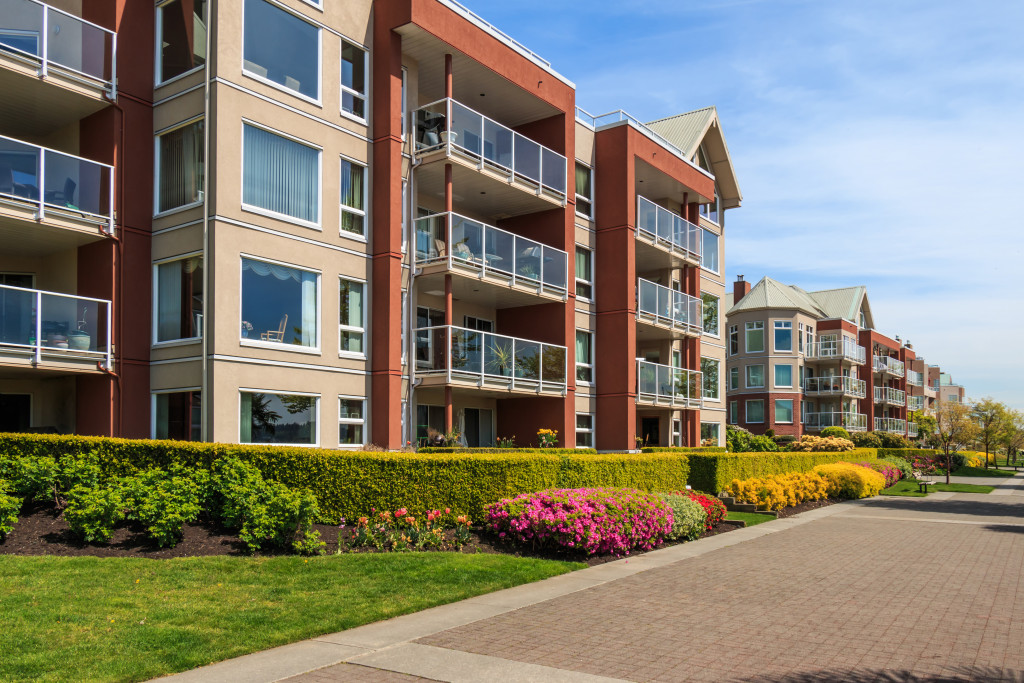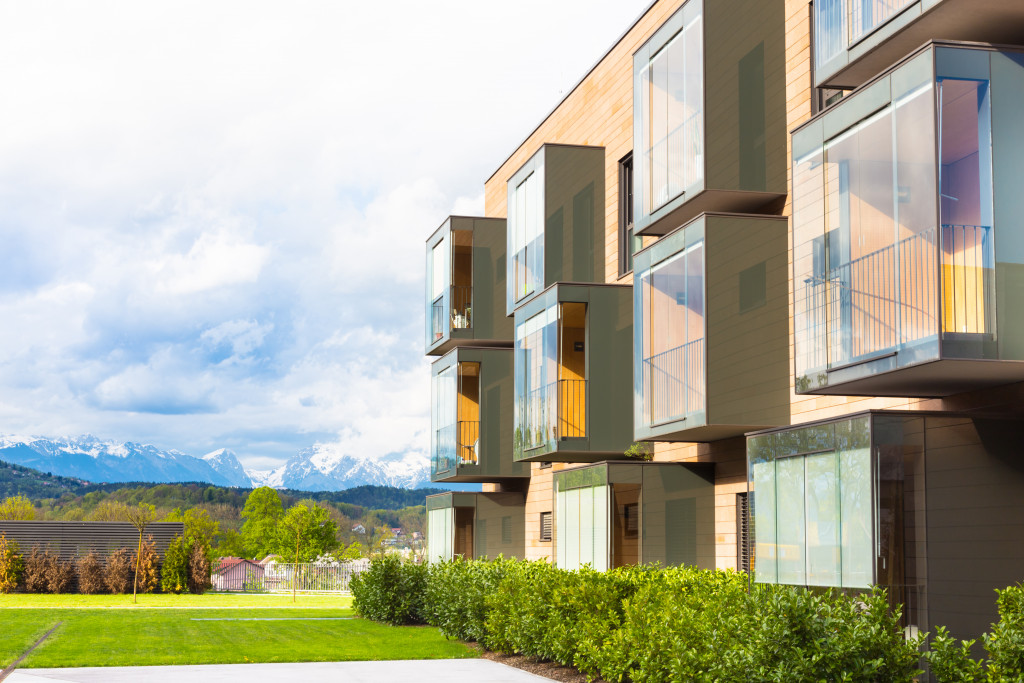- The sustainable design transforms the architecture industry, allowing architects to reduce environmental impact through eco-friendly technologies and practices.
- Energy-efficient materials, locally sourced components, and smart building automation systems can help minimize electricity and water use.
- Waste reduction methods such as closed-loop recycling can help prevent unnecessary rubbish from entering circulation.
- Sustainable materials like bird-friendly glass, modified wood, and cork replace traditional materials with longer lifespans and less environmental impact.
- Improved air quality, increased property value, and a consultant for cleanroom design are the benefits of sustainable design in architecture.
Sustainable design is rapidly becoming the norm for many architecture firms around the globe as environmental stewardship and sustainability gain ever greater importance from both a business and social vantage point. Various approaches to reducing the environmental impact architects can take when designing buildings provide unique benefits.
This will discuss how sustainable design can help reduce carbon footprints in the architectural industry while exploring some of the more notable technological developments that have enabled architects to become even more effective agents of change in protecting essential natural resources.
With this foundational understanding gained through exploration, readers should be better equipped to tackle problems related to sustainable practices in architecture with tremendous success and less risk.
Sustainable Design Principles in Architecture
The field of architecture has seen a growing passion for sustainability, with an increasing number of design professionals implementing eco-friendly principles into their projects. This shift is mainly in response to the resources used to build and maintain structures, and the impact buildings have on the environment.
Sustainable design principles can be found in energy-efficient materials, recycled and locally sourced components, and practices such as rainwater harvesting. Smart building automation systems help architects minimize electricity and water use while creating comfortable interiors.
These inspiring trends demonstrate how sustainable design can benefit society by preserving resources for future generations.
Energy Efficiency
Energy efficiency is one of the crucial areas to consider in terms of sustainable architecture. Architects are increasingly turning to a variety of cutting-edge technologies, such as geothermal energy systems and photovoltaic panels, to reduce the demand for traditional forms of energy.
Natural materials such as light-colored stones that can reflect solar radiation or low-emission paints combine with passive design strategies like insulation and well-designed air flow systems to ensure that buildings are beautiful and efficient. With careful attention to energy-saving measures within the building, architects create inspiring structures that minimize environmental impact while providing comfort and beauty.
Waste Reduction
One of the most critical aspects of sustainable design in architecture is reducing the environmental impact of waste. Building design and materials can profoundly affect how construction and deconstruction processes generate and manage waste, with well-considered decisions preventing unnecessary rubbish from entering circulation.
Many projects are now adopting sustainable practices, such as employing a ‘closed-loop’ approach, which recycles 85% or more of all waste produced. Through the minimization of construction debris, both conventional landfills and incinerators experience a reduced demand for incoming materials, with fewer air pollutants released as a result.
Use of Sustainable Materials
Sustainable materials are integral components of any conversation about sustainable design in architecture. More architects are turning to bird-friendly glass, modified wood, and cork material that is biodegradable and carbon-negative. The ever-growing selection of natural and recycled materials makes them more cost-effective than traditionally manufactured materials.
Moreover, these new technologies offer longer lifespans for construction products, meaning many classic staples such as bricks will be replaced by alternatives such as rammed earth or mud brick construction.
Many high-performance insulation systems now use nontoxic and nutrient-dense insulation rather than fiberglass, which is toxic when manufactured. Combining all these technologies produces a better-built environment with less environmental impact, an increasingly popular architectural trend.

Benefits of Sustainable Design in Architecture
Sustainable design in architecture focuses on reducing environmental impact and leveraging various trends and technologies to promote more innovative, more efficient practices.
Improved Indoor Air Quality
Sustainable architecture is becoming more critical than ever, and improved indoor air quality is a significant benefit. Architects can employ various strategies like incorporating plants and air filtering systems and utilizing natural ventilation. Implementing these sustainable practices also helps reduce energy consumption used for air conditioning.
In addition to being energy-efficient, these measures can create healthier, more productive workplaces. The availability of innovative technologies has made green architecture much easier to incorporate into the design process without compromising aesthetic value or functionality.
Increased Property Value
Numerous studies have shown that when homes are designed with sustainability in mind, the properties are more attractive to buyers and tend to sell faster. This is primarily due to the fact that these homes often require less energy, which translates into lower operating costs. As such, sustainable homes usually command a premium over their non-sustainable counterparts.
Furthermore, these properties suffer less depreciation over time due to their ability to withstand changing climates and technology upgrades. These factors can help buyers build wealth through increased property value over the long run.

Current Trends in Sustainable Design and Cleanroom Design
Sustainable design has become integral to the architecture industry, with architects exploring various technologies to reduce environmental impact. Sustainable practices have gained traction, from energy-efficient materials to green roofing for insulation.
Alongside this trend, cleanroom design has emerged as a critical area where a consultant for cleanroom design plays a crucial role. They help integrate green technologies into cleanroom facilities and advise clients on optimizing their space while introducing sustainable design elements.
As sustainability remains a priority in the architecture industry, a cleanroom design consultant is facilitating more efficient facility designs and advancing the industry’s progress towards cleaner, more eco-friendly projects.

Sustainable architecture is a great way to address the issues due to climate change. By engaging in sustainable practices, architects and professionals in the industry can help promote healthier building designs with benefits such as increased property value, improved air quality, and a reduced environmental footprint. The trends in sustainable design are constantly evolving.
However, that commitment to sustainability is vital for any leading architect looking to achieve environmentally friendly solutions in the industry. The long-term economic and social benefits of sustainable design principles will positively affect the environment, energy usage, and the planet for generations to come.
It is further essential that architects acknowledge the need for cleanroom design as this will bring distinct advantages like reduced environmental impact from regulated manufacturing processes—proving why sustainable practices should be part of any reputable architectural project.

